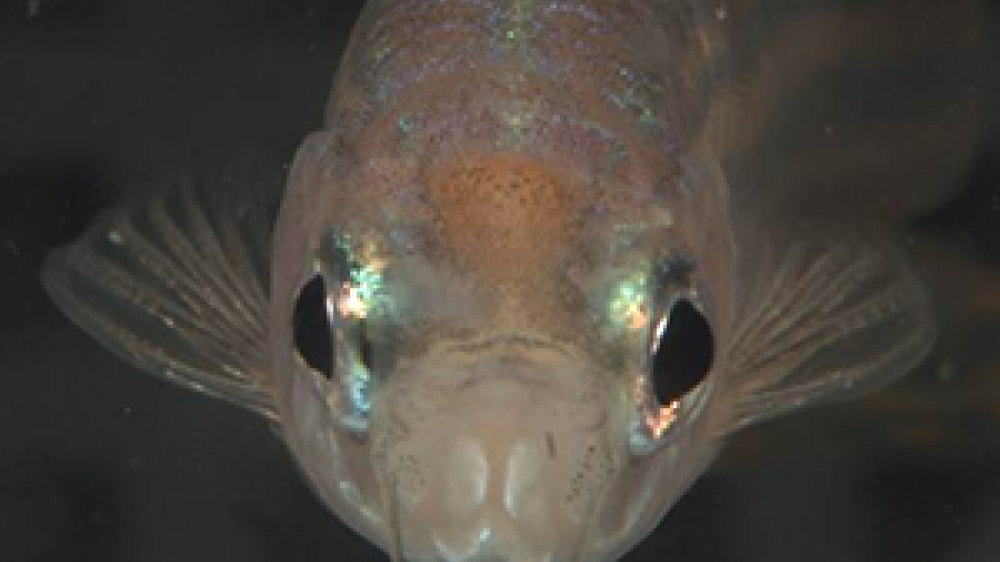A new automated zebrafish behaviour monitoring tool

A new paper published in Scientific Reports describes the Fish Behaviour Index (FBI), an automated tool to monitor the behaviour of singly housed zebrafish, developed by NC3Rs grant holder Dr Lynne Sneddon and colleagues at the University of Liverpool.
By detecting subtle changes in behaviour, the tool can allow quicker welfare assessment, interventions and administration of analgesia, representing an important refinement.
Fish are the second most common group of species used in scientific studies in the UK, but relatively little is known about their welfare in comparison to other laboratory species such as rodents. Many routine procedures in zebrafish, including fin clipping for identification purposes, invasive tagging and surgery, result in tissue damage. Evidence supports the consensus that fish have the potential to experience pain and appropriate analgesia should be provided. Assessing welfare in fish can be challenging and time-consuming due to the high numbers of animals housed in aquaria, and the often subtle nature of behavioural changes. Currently there are a few convenient or low-cost approaches to identify behavioural and physiological indicators of pain and or/stress. An automated approach is required to assess if behaviour is normal and gauge pain after invasive procedures.
The FBI tool is a robust approach to identify and assess pain in zebrafish that uses a camera and tracking software to track the 3D trajectories of single fish. Evidence has previously shown that normal, healthy zebrafish are usually constantly swimming, using all areas of their tank. After a painful stimulus, fish reduce their swimming activity and increase their use of the bottom of the tank, and this can be prevented with the administration of analgesia.
The FBI can discriminate between baseline healthy behaviour and abnormal behaviour and categorise these into four broad areas (“healthy”, “OK”, “unhealthy” and “abnormal”). The software gives information about “activity” and “distance travelled” as well as the duration of behavioural periods, offering a rating updated in real time (every minute) and designed to characterise fish behaviour as a combination of qualitative and quantitative information. This information can be used by laboratory staff to accurately monitor the welfare of freely moving fish in response to laboratory procedures and provide alerts to enable intervention to improve welfare.
To validate the system, Dr Sneddon and her team also tested the efficacies of four drugs with analgesic properties in ameliorating the behavioural change induced by the fin clip procedure. Lidocaine, flunixin, bupivacaine and morphine administered into the tank water prevented the associated reduction in activity and distance swum after fin clipping. Application of lidocaine resulted in behaviours that most consistently aligned with observations in the control group, suggesting that it was the most successful analgesic tested. The authors recommend that analgesia should be provided for invasive procedures that cause tissue damage and may cause pain, unless to do so would confound data collection.

The adoption of the FBI in large scale laboratory fish facilities would reduce staff time spent on welfare checks as well as providing an error free means of measuring fish behaviour. Future studies could extend the FBI’s use to other experimental contexts. At the moment, the tool allows monitoring of freely moving fish that are singly housed, such as for the purpose of genotyping or recovery from surgery. However, work is underway to develop a tool to investigate group responses, based on analysis of colour in video images. Since the FBI system represents a generic approach to providing non-intrusive monitoring, combining behavioural characteristics, and evaluating the resultant combination, it may be applied in a wide variety of 3D and 2D behavioural contexts where the responses of zebrafish to a variety of treatments is required.
Dr Sneddon said: “The FBI represents a major step forward in our ability to assess welfare in zebrafish and by making it freely available for download I sincerely hope it will be adopted by zebrafish users across the globe. By implementing this tool researchers and carers can refine their experiments by ensuring their zebrafish are behaving normally in experiments, but further can employ analgesic protocols when invasive procedures are necessary and prevent pain being a confounding factor in their studies.”
The tool is free to download. Please click here to access the FBI Zebrafish Tracking and Analysis software, source code and user guide. Video cameras are required.
